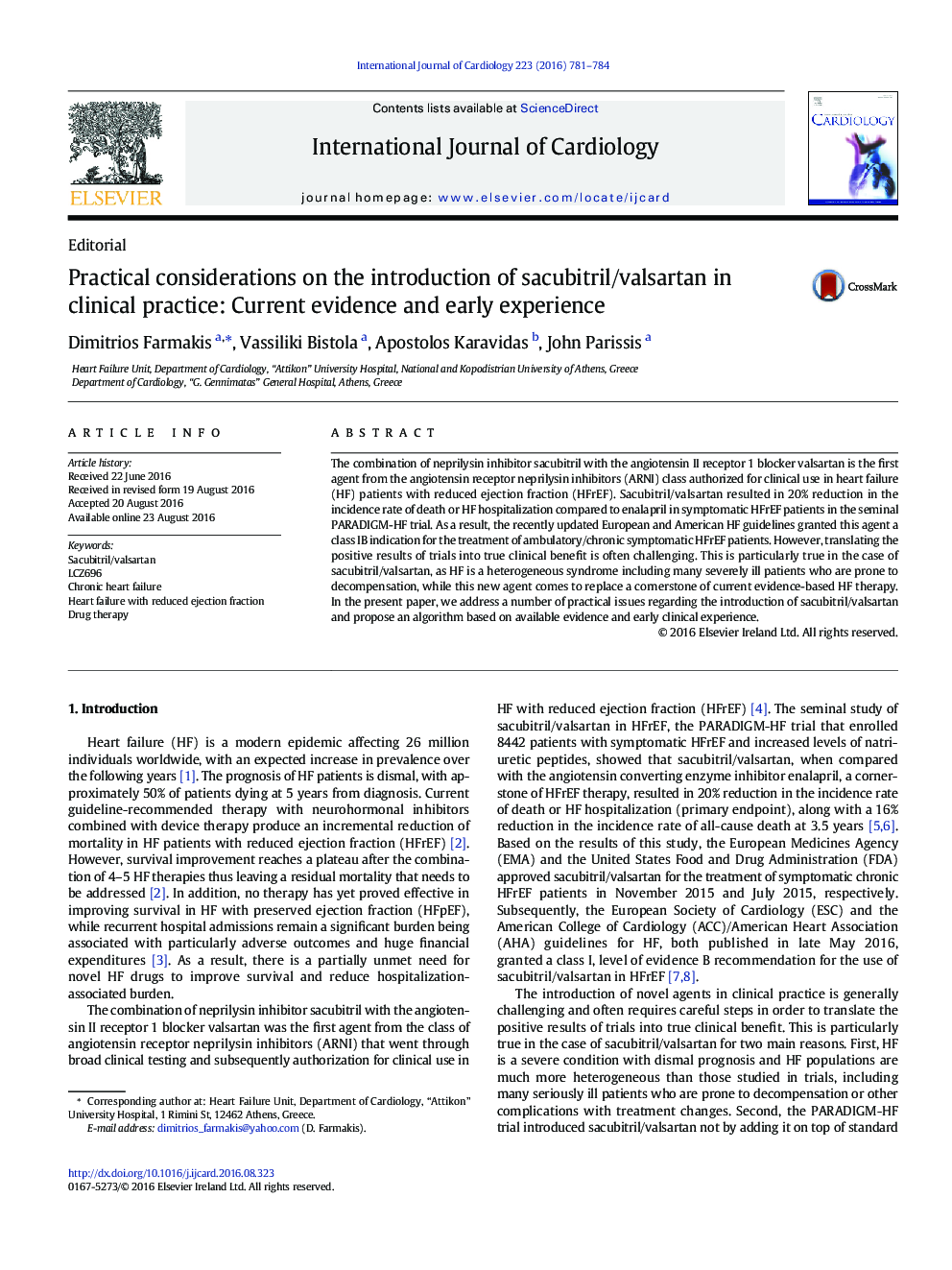| Article ID | Journal | Published Year | Pages | File Type |
|---|---|---|---|---|
| 5963063 | International Journal of Cardiology | 2016 | 4 Pages |
The combination of neprilysin inhibitor sacubitril with the angiotensin II receptor 1 blocker valsartan is the first agent from the angiotensin receptor neprilysin inhibitors (ARNI) class authorized for clinical use in heart failure (HF) patients with reduced ejection fraction (HFrEF). Sacubitril/valsartan resulted in 20% reduction in the incidence rate of death or HF hospitalization compared to enalapril in symptomatic HFrEF patients in the seminal PARADIGM-HF trial. As a result, the recently updated European and American HF guidelines granted this agent a class IB indication for the treatment of ambulatory/chronic symptomatic HFrEF patients. However, translating the positive results of trials into true clinical benefit is often challenging. This is particularly true in the case of sacubitril/valsartan, as HF is a heterogeneous syndrome including many severely ill patients who are prone to decompensation, while this new agent comes to replace a cornerstone of current evidence-based HF therapy. In the present paper, we address a number of practical issues regarding the introduction of sacubitril/valsartan and propose an algorithm based on available evidence and early clinical experience.
